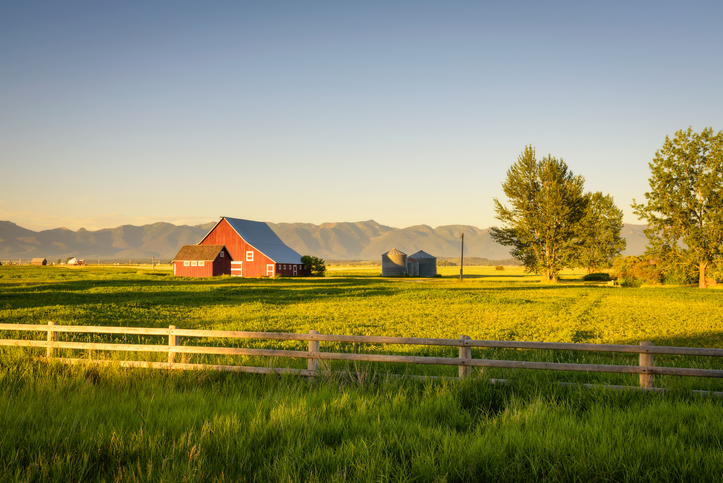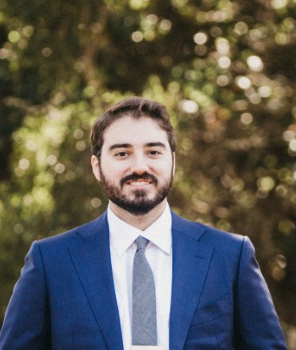In your mind’s eye, picture rural America. What do you see? How do the people you envision look? What are their concerns? Which part of the country do they live in?
If you are like most people, you probably imagined an all-white, staunchly conservative, midwestern, agricultural population. But rural America — like urban, suburban, and exurban America — is not a monolith. While the majority of rural Americans are white and Republican, rural communities are more diverse than generally perceived.
This is a significant fact for progressive organizers to grapple with. During the last few election cycles, Democrats have primarily focused their campaign efforts on urban and suburban areas where they typically garner a larger share of votes. Prior to COVID, Democrats did not even plan on campaigning in Iowa during the general election.
But Democrats don’t need to choose between urban and rural: we should work tirelessly to increase turnout in major cities in battleground states — particularly among BIPOC people who turned out for Barack Obama but did not vote in 2016 — and eat into Republicans’ winning margins in rural areas.
It would be folly to surrender rural America and its millions of votes, particularly in battleground states, to the Republican party. Suggesting that we do assumes that current political trends — rural areas as bastions of conservative views — will never change.
The growing diversity of rural communities suggests otherwise. When Democrats and progressives have focused on persuading rural populations, in particular rural BIPOC communities, they have reaped the benefits. Increased voter turnout among Native Americans in Montana (where they represent approximately seven percent of the population) was one of the primary reasons Senator Jon Tester was re-elected in 2018 with over fifty percent of the vote. As demographic changes in Georgia and Texas move these states from red to purple, increased Latinx rural turnout in Texas and increased Black rural turnout in Georgia will be crucial to remaking the Electoral College map.
So what is rural America? The United States Census Bureau defines rural areas as “any incorporated place or Census Designated Place with fewer than 2,500 inhabitants that is located outside of an urban area.” While the overwhelming majority of the American landmass (97 percent) is comprised of rural areas, only about 19 percent of the American population lives in these communities. Most rural areas are experiencing persistent population loss and are, on average, less prosperous than urban areas. Yet “people of color and Native Americans accounted for 75 percent” of population growth in rural communities and small towns. A large and growing share of rural America, approximately 22 percent (or 10 million people), is nonwhite. Popular commentators often equate rural American landscapes with Field of Dreams Iowa cornfields, but nearly half of rural areas in the United States are in the South; these areas have a far higher percentage of Black residents than rural areas in other regions.
It’s true that urban and suburban areas are increasingly Democratic, while rural areas are becoming even more lopsidedly Republican. Nevertheless, if there is anything one should surmise from the history of politics, it is that political dynamics are not immutable. Indeed, they are ever shifting. Areas that were once consistently conservative (Richard Nixon’s and Ronald Reagan’s Southern California as well as Virginia) are now largely Democratic. In these areas, people of color and liberal whites increasingly form electoral majorities.
Progressive activists, organizers, and campaign managers should work to lessen losses among rural voters. While it is not likely progressives will beat conservative forces in rural contests anytime soon, it is not inconceivable that a populist economic agenda would lead to Democratic rural gains. Polling indicates as much. In 2016, Donald Trump lost the popular vote and won the electoral college by squeaking out victories in Pennsylvania, Wisconsin, and Michigan, primarily because of increased support from rural voters. In the end, Trump won with fewer than 80,000 votes — out of 137 million ballots cast. Hillary Clinton would be president today if her campaign had increased turnout among urban voters in Philadelphia, Detroit, and Milwaukee. She would also be president if she had lost by fewer votes in the rural counties surrounding those three cities.
Progressives have been enormously successful in pushing for and passing progressive economic and health ballot initiatives in the form of increased minimum wages and Medicaid expansion in red states such as Arkansas, Missouri, Utah, Idaho, and Oklahoma. This success shows that progressives can engineer policy victories in traditionally conservative states when they decouple the policy from the partisanship that often surrounds it.
Rural Americans struggle with health and economic issues that would be alleviated by progressive policy, making them a prime target for progressive organizers. According to polling conducted by NPR in 2019, “A substantial number (40 percent) of rural Americans struggle with routine medical bills, food, and housing. And about half (49 percent) say they could not afford to pay an unexpected $1,000 expense of any type.” In addition, “one-quarter of respondents (26 percent) said they have not been able to get health care when they needed it at some point in recent years.” These respondents would benefit from progressive legislation for increased public investment and an expansion of healthcare, whether in the form of Medicaid, Medicare, increased Affordable Care Act subsidies, or a robust public option.
We have entered a new Gilded Age. Income inequality and wealth inequality have reached levels not seen in a century. Rural areas are some of the hardest hit economically in the country. As plutocrats grow richer and stock prices reach new heights during the worst health crisis since the 1918 Spanish Flu, rural Americans — like most Americans — are appropriately angry. Progressives can peel off enough votes from conservatives by appealing to their economic interests and deemphasizing partisanship. By combining these votes with those of suburban and urban liberals, a truly progressive future awaits this country.
Read the entire issue on Organizing in Rural America.

